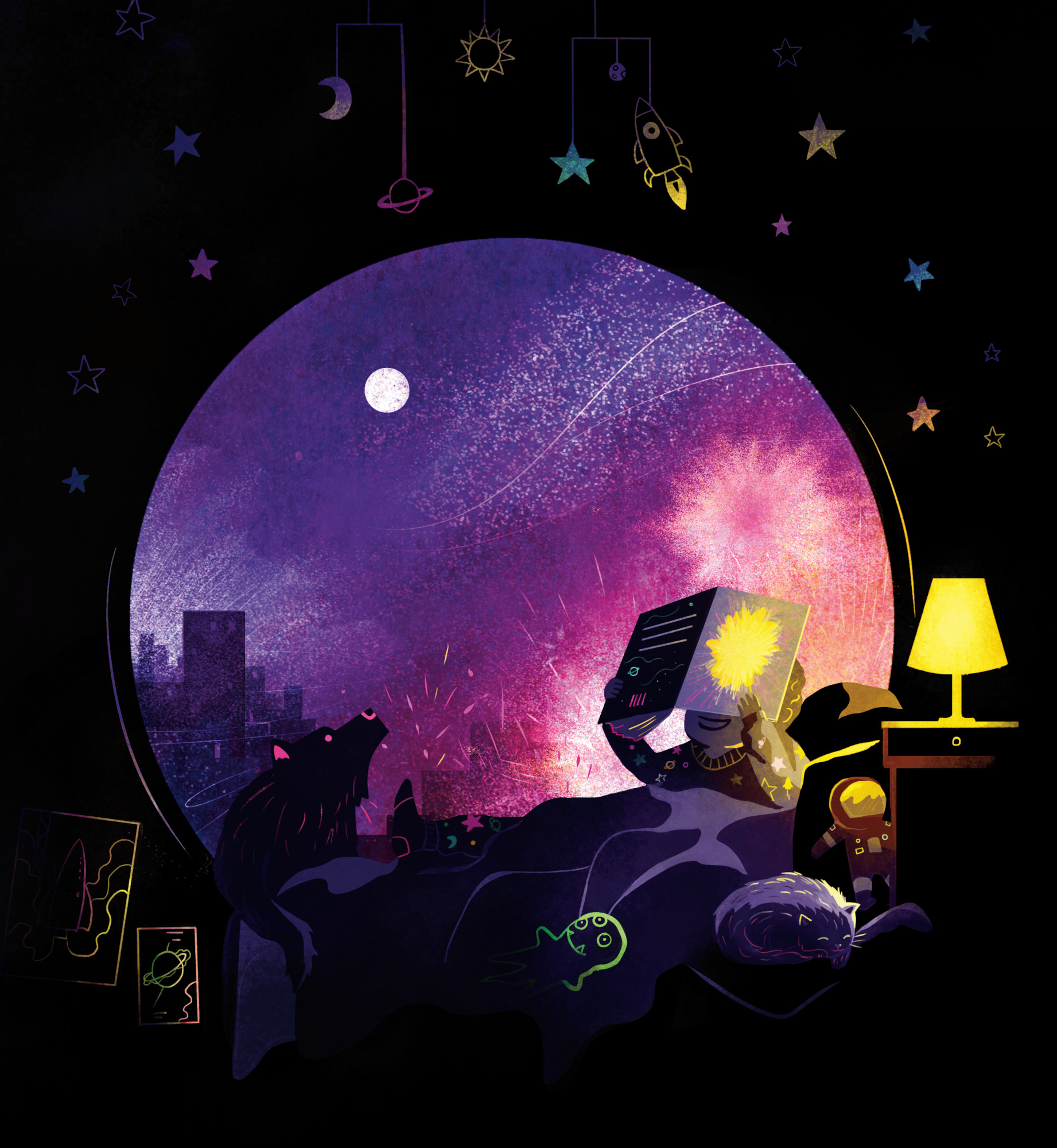School Visits & Presentations

Programs: K–2, 3–5, 6–8 (HS by request)
Formats: Class visits (30–60 min), grade-level assemblies (45–50 min), family night (60 min), virtual (30–45 min)
Group size: Classes up to 35; assemblies up to 250 (with AV)
Tech needs: Projector/screen; mic for assemblies; whiteboard
Materials I bring: Slides; printables; additional activity materials if needed
Learning goals: Asking scientific questions; using models; scale & patterns; careers in STEM
Accessibility: Visuals with high contrast; hands-on options; “talk-or-write” participation; sensory-friendly cues
"Big Bang Book" Reading: Where & When Are We In The Cosmos?
Grades: K–2 (adaptable 3–4)
Length: 30 minutes (K–1), 40 minutes (2)
Group size: Class (≤35) or mini-assembly (≤100)
What students do: Interactive read-aloud; "zoom out" by placing pre-cut picture cards along a floor line; “Question Ticket” exit slip.
Learning targets: Students identify simple sky patterns (day/night, stars at night), ask and refine questions like scientists, and use a ‘zoom-out’ model to locate Earth in space.
NGSS ties: 1-ESS1-1; SEP: Asking Questions, Developing and Using Models; CCC: Patterns, Scale
Teacher prep: Clear a floor strip for the zoom-out line.
Take-home: 1-page “Ask a Big Question” worksheet (if desired)
"Picnic Planet" Reading: Tour the Galaxy's Worlds
Grades: K-3
Length: 40 minutes
Group size: Class or grade-band assembly
What students do: Interactive read-aloud; “Good Picnic/Bad Picnic” sort for different worlds; optional quick draw of an invented world.
Learning targets: Planets and moons have different surfaces/atmospheres, we use observations and comparisons to explain our choices, we can locate Earth in space with a simple “zoom-out” model.
NGSS ties: 1-ESS1-1; SEP: Analyzing & Interpreting Data; Developing & Using Models; CCC: Systems, Scale
Teacher prep: Two hoops/tape circles; clear floor space.
Take-home: “Explorer at Home” prompt (observe & sketch a local landscape feature)
The Scale of the Universe: From Your School to the Cosmic Web
Grades: 3–8
Length: 40–50 minutes
Group size: Class or assembly
What students do: Progressive “zoom-out” with markers; cosmic scale walk; lasso galaxies in the sky.
Learning targets: Use scale models; identify patterns in the night sky; explain why the Sun appears the way it does.
NGSS ties: 5-ESS1-1; MS-ESS1-2 & MS-ESS1-3 (optional); SEP: Developing & Using Models; Analyzing & Interpreting Data; CCC: Scale, Patterns
Teacher prep: Tape for floor scale markers
Take-home: Printable “Universe on a Line” scale tape
Exoplanet Workshop: “Build-a-Planet Lab”
Grades: 4–8 (HS enrichment available)
Length: 45–60 minutes
Group size: Class (≤35)
What students do: Teams roll dice to determine their planet's star (size/temp/age), orbit (distance, eccentricity optional), and bulk qualities (mass/atmosphere) to design a plausible world; gallery walk; we compare to real finds (lava worlds, evaporating atmospheres, rogue planets).
Learning targets: Use models to predict surface conditions; explain how observations (transits, direct imaging) reveal properties; connect evidence to claims.
NGSS ties: 5-ESS1-1, MS-ESS1-2, MS-ESS1-3, MS-PS2-4; SEP: Developing & Using Models, Constructing Explanations; CCC: Cause & Effect, Scale
Teacher prep: 6–8 table groups; copies of planet sheets (I provide)
Take-home: Completed “My Planet” one-pager + class poster PDF after visit